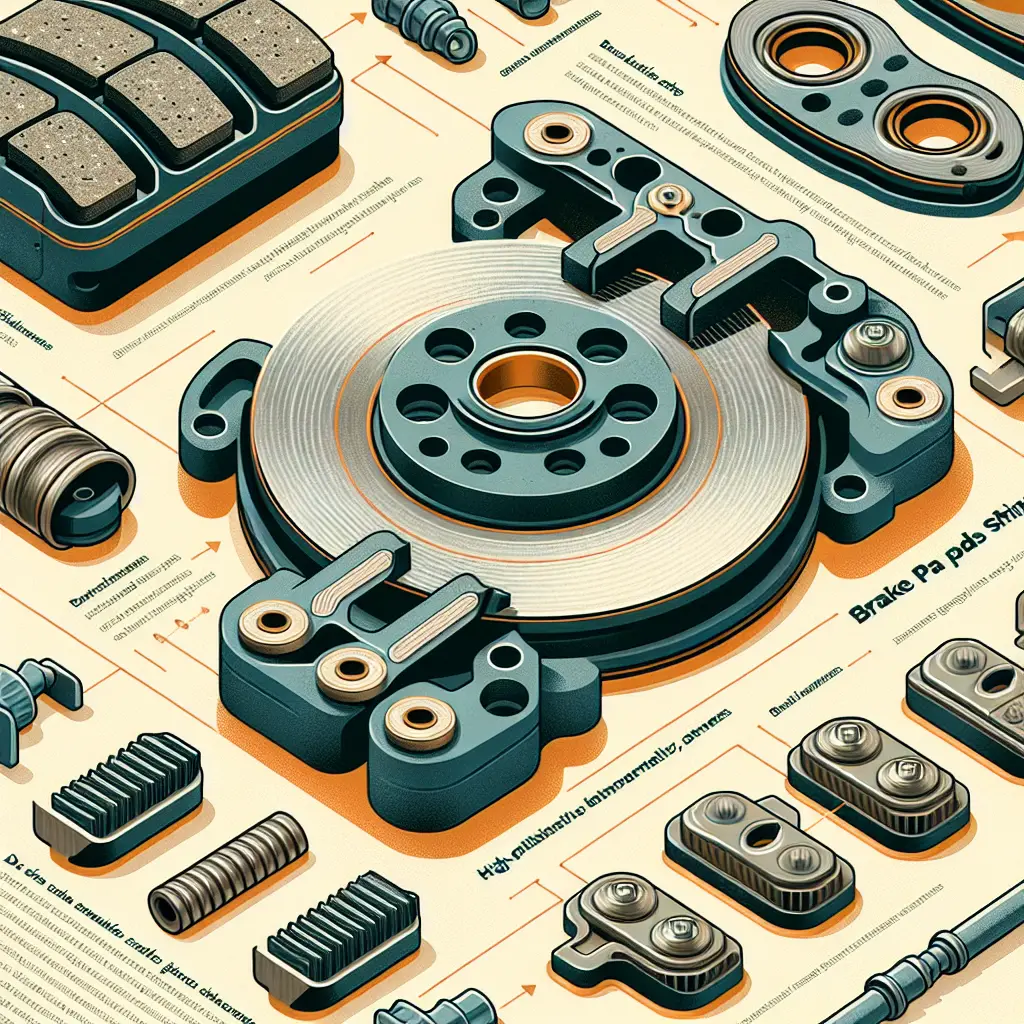Are Brake Pad Shims Necessary? Unveiling the Mystery Behind the Silence
When you press the brake pedal in your vehicle, you expect a smooth and quiet stop. But, sometimes, you’re met with a symphony of screeches, squeals, and vibrations. It’s not just irritating – it tells a story of what may be missing inside your wheel well. In this post, we’ll delve into the tiny, but mighty, world of brake pad shims to uncover their importance in our cars’ braking systems.
Understanding the Role of Brake Pad Shims
Brake pads are central to your car’s ability to stop safely. But what about that humble hero that prevents noise and vibration? Yes, we’re talking about the brake pad shim. A shim serves as a cushion between the brake pad and the caliper, reducing vibration and, consequently, noise. It’s not just about comfort; a quieter ride is often a sign of a better-performing brake system.
Now, the class of drivers out there might argue the necessity of these thin pieces of metal or rubber. “My car brakes fine without them,” they might say. However, brake engineering experts, like those at Car and Driver, often emphasize that for optimum braking performance and longevity, shims (or at least some form of noise-reduction measure) should not be overlooked.
The Science and Benefits of Shims
When brake pads grip the rotors to slow your car down, a great deal of pressure and heat is created. This is the point where brake pad shims come into play. They provide a multitude of benefits:
- Noise Reduction: As mentioned, shims dampen the vibration that can cause brake noise.
- Heat Dissipation: They can help in heat management, assisting in pulling away some of the heat that is generated between the brake pad and caliper.
- Preventing Wear and Tear: By providing a more even pressure distribution, shims help in reducing wear on the brake pad itself, potentially saving you money in the long run.
- Enhanced Comfort: Reduced noise and vibration means a more comfortable experience for you and your passengers.
Are Brake Pad Shims Universal?
Not all brake pad shims are created equal – different materials suit different vehicles and driving conditions. As Motor Trend suggests, consulting your vehicle’s manufacturer recommendations is a wise first step to determine the appropriate type of shim for your car.
For performance cars or those that do a lot of towing, for instance, brake pad shims might be designed with more robust materials to withstand higher levels of heat and pressure. Everyday commuters might benefit from a standard rubber or composite shim that provides adequate noise insulation and durability.
Installation and Maintenance
Proper installation is critical. Fitting your brake pad shims incorrectly can lead to a host of problems, including the very noise and wear they are designed to prevent. It’s generally recommended to have a certified mechanic do the installation, ensuring that everything is seated correctly and functions as intended.
Maintenance, on the other hand, mostly revolves around routine brake service. Every time the brake pads are serviced or replaced, the shims should be inspected (and replaced if necessary) to ensure they’re still in good shape. This advice from brake specialists like Brake & Front End is crucial to follow for maintaining the effectiveness of your brake system.
Real-Life Scenarios
Consider these real-life scenarios that emphasize the necessity of brake pad shims:
- John, an everyday commuter, noticed a high-pitched squealing every time he slowed down at red lights. After a check-up, it was found that his brake pad shims had worn out. Replacing them not only eliminated the noise but also made braking smoother.
- Sarah, an off-road enthusiast, started experiencing a grinding noise during her excursions. Upon inspection, her mechanic discovered that one of the brake pad shims had dislodged. Replacing and properly installing a new set of shims designed for heavy-duty use brought back the quiet and effective braking she needed.
Are There Alternatives?
In the world of automotive technology, alternatives and upgrades are always on the horizon. There are chemical compounds available, such as brake grease or anti-squeal adhesives, but these are more temporary solutions. While they can help mitigate noise for a period, they don’t offer the same level of durability and performance benefits as well-fitted shims.
Conclusion: To Shim or Not to Shim?
After looking at the facts, it becomes apparent that brake pad shims play a vital role in our vehicles’ braking systems. They are necessary for those who value a serene drive free of unnecessary noise and want to extend the lifespan of their brake components.
Ignoring them might save you a small amount of money and time upfront, but it could cost you more in the long run – both in peace of mind and in the potential for additional repair bills.
So, next time you’re getting your brakes serviced, remember the silent guardian of your stopping power – the brake pad shim. It might not be the star of the show, but it certainly deserves its moment in the spotlight for keeping our brakes quiet and effective.
In conclusion, addressing brake pad shim needs might seem like a detail, but it’s the details that contribute to the overall performance and longevity of your vehicle. It’s an area where skimping could end up costing more than just an annoying noise – it could cost you the performance of your entire braking system.
Remember to always consult with the professionals regarding brake maintenance, ensuring that you’re not only following the best practices but making the most informed decisions when it involves your safety on the road. Safe driving begins with well-maintained brakes, and a well-maintained brake system includes functioning shims.

